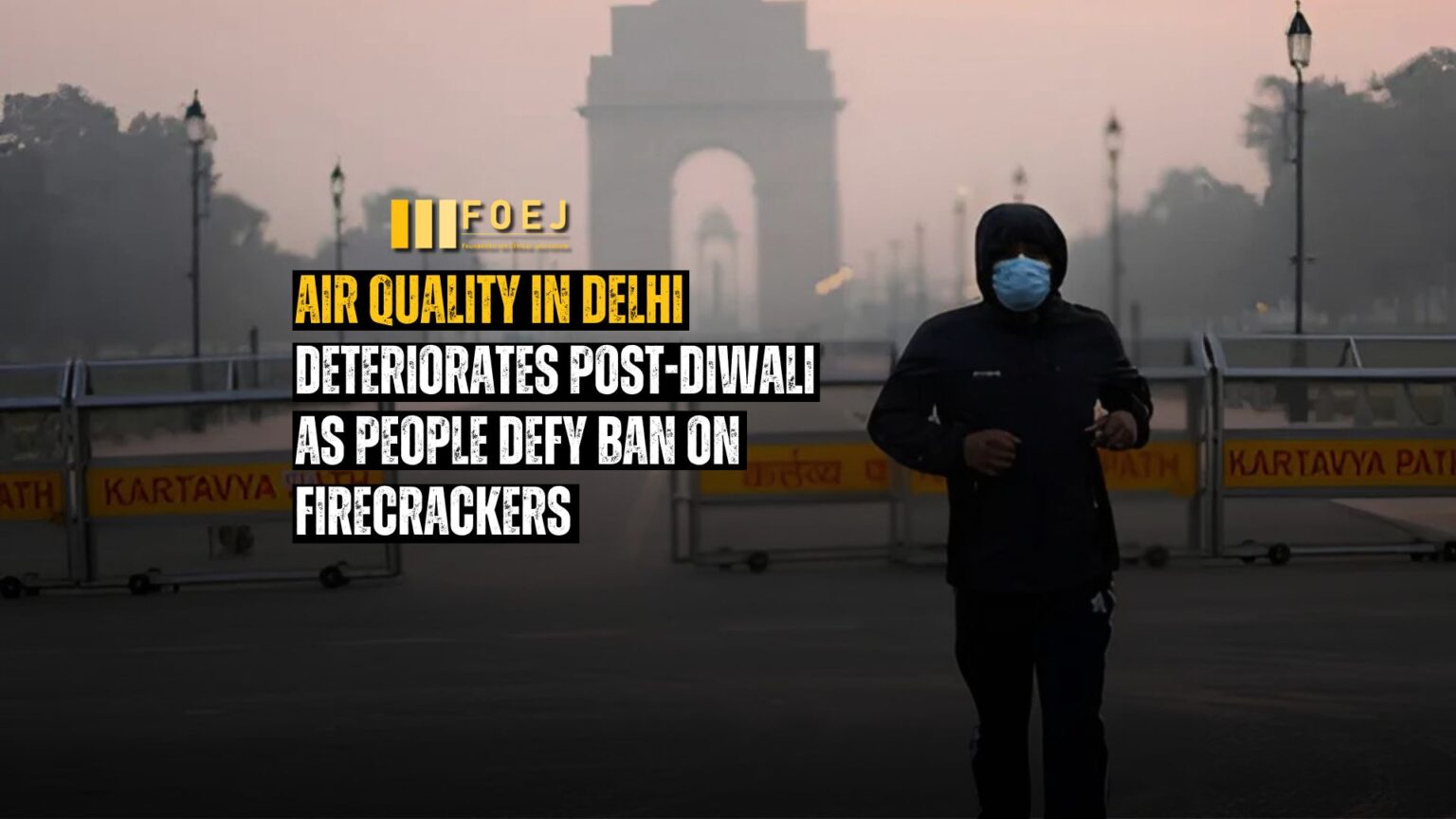Residents of Delhi, Noida, Gurugram, and surrounding areas in the national capital region awoke to hazardous smoke following Diwali celebrations, as many ignored the ban on firecrackers, leading to significant noise pollution and decreased visibility. Fortunately, the air quality index improved slightly in the afternoon due to increased wind speeds.
On November 1 at 11 a.m., the air quality in Anand Vihar, Delhi, was classified as “very poor,” with an AQI of 385, according to the Central Pollution Control Board (CPCB).
Anand Vihar’s AQI dropped into the “severe” category on Thursday night as PM2.5 levels spiked, resulting in dangerous conditions for respiratory health. Meanwhile, several areas in Punjab and the Union Territory of Chandigarh reported air quality in the “poor” category.
As of 11 a.m. on Friday, Gurugram’s AQI was recorded at 376, Jind at 326, and Charkhi Dadri at 210, according to the CPCB. Unlike last year’s Diwali, when favorable conditions kept the AQI at 218, this year saw a return to Delhi’s high pollution levels, exacerbated by unfavorable weather, stubble burning, and vehicular emissions.
New Delhi, one of India’s cities with the worst air quality, is especially affected by toxic gray smog the day after Diwali. Since 2017, the Delhi government and some other states have imposed bans on the use and sale of firecrackers, urging residents to choose more sustainable alternatives like eco-friendly firecrackers and light shows. However, these regulations are frequently ignored, with firecrackers readily available at roadside stalls and shops.
Some residents in New Delhi believe the ban on firecrackers has little impact, while others view it as an essential step in the fight against pollution.
Area-wise average AQI in Delhi at 11am:
Anand Vihar: 385 (PM2.5 pollutant)
Ashok Vihar: 383 (PM10 pollutant)
Burari Crossing: 382 (PM2.5 pollutant)
Chandni Chowk: 333 (PM10 pollutant)
Dwarka-Sector 8: 369 (PM2.5 pollutant)
IGI Airport (T3): 369 (PM2.5 pollutant)
Jahangirpuri: 385 (PM2.5 pollutant)
Mundka: 367 (PM2.5 pollutant)
RK Puram: 391 (PM2.5 pollutant
Despite the Delhi government establishing 377 enforcement teams and raising awareness through local organizations to ensure adherence to the firecracker ban, many neighborhoods in east and west Delhi reported widespread violations. The city’s 24-hour average AQI was measured at 330, an increase from 307 the day before.









